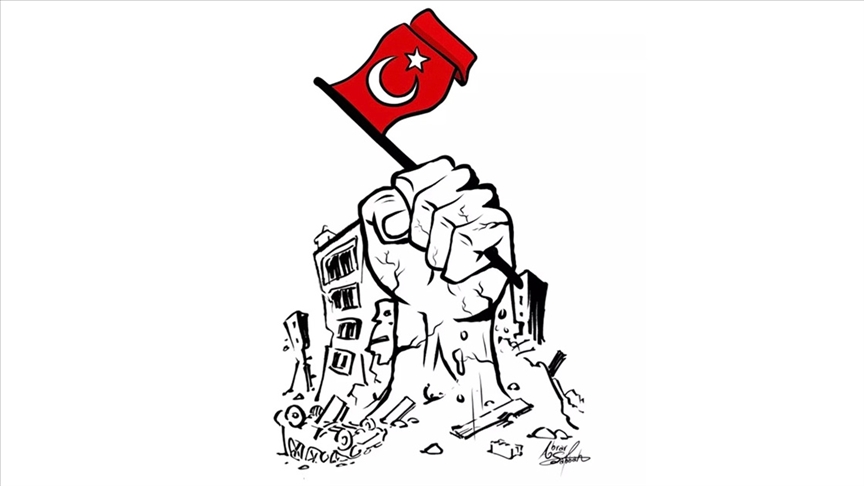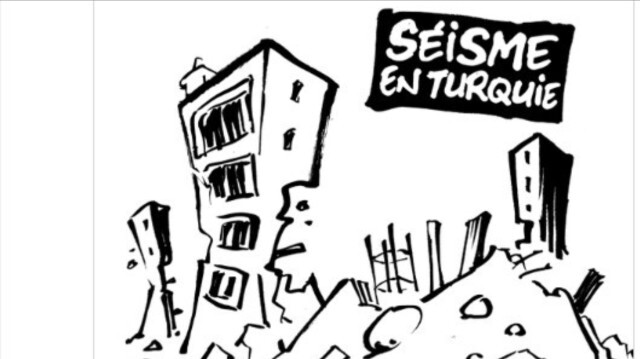Prophet Muhammad separated his days into three segments; one for prayers, one for his works and the works of his community and one for family issues.
HIS SALAHS
Salah, one of the five pillars of Islam, may also be considered the most important for it signifies the worshipping of Allah through certain rituals.Although on the outside it seems to include only some mechanistic movements and allusions, it actually refers to a begging to and requesting from Allah. The five daily prayers became incumbent upon the Muslims with the Miraj one and a half years before the Hijrah. It is the kind of worshipping that all adolescent and sane people must perform. Prophet Muhammad (pbuh) taught salah to his ummah and performed it more frequently than anyone else; he described salah as the most important practice in his life and the joy of his heart.
The sources reveal that the Prophet performed many nafila (extra) salahs to the extent that sometimes his feet got swollen only because he wanted to become a thankful servant of Allah.
The Prophet performed fard salahs in front of his companions so that everyone could observe and learn about their special features. However, some nafila salahs exclusive to his person could not be accessed as clearly by everyone. His nafila salahs can be classified under three groups: nightly salahs, daytime salahs and others.
a) Nightly Salahs
The nightly salahs of Prophet Muhammad were witnessed by his wives, some of his relatives, and some of his close companions. Aisha described one of Prophet Muhammad’s usual night procedures: “… He would sleep before the night came down, he would wake up to worship in the later part of the night, he would perform the witr salah when the dawn came, and then he would return to his bed.”Ibn Abbas narrates from what he saw at night as a guest in Prophet Muhammad’s house: “I lay down with my head on the breadth of the cushion, and the Messenger of Allah, lay down with his head on its length. The Messenger of Allah slept until halfway through the night or a little before or after it, he awoke and sat up and wiped the sleep away from his face with his hand. Then he recited the last verses of Surat Al-i Imran. Then he got up and went over to a hanging water-skin and performed ablution from it, and then he stood in prayer. I stood up and did the same and then went and stood by his side. The Messenger of Allah put his right hand on my head and took my right ear and tweaked it. He performed twelve rakats (every full circle in salah involving standing and prostration positions). Then he lay down until the muezzin (caller to prayer) came to him, and then prayed two quick rakats, and went out and performed the morning salah.”
Aisha stated that in his last year of life, Prophet Muhammad had started to perform salahs while sitting. She also informed that he would stand up when 30 or 40 verses were left to read and would complete the salah in an upright position.
In view of the length of his sajdas (prostration) and qiyams (standing), it can be deduced that Prophet Muhammad spent more than an hour in worshipping Allah every night.
b) Daytime Salahs
Prophet Muhammad continued to perform many nafila salahs in the daytime. He performed four and then two more rakats before the duty of noon; two rakats after the duty of the evening; and two rakats after the duty of the night. It is reported that especially the two rakats before the duty of morning is very important in terms of the sunnah. These salahs were called muakkad salahs which were almost never neglected by Prophet Muhammad. The non-muakkad salahs, on the other hand, concern the four rakats he sometimes used to perform before the duty of afternoon and night.The tahiyyatu al-masjid salah that is composed of two rakats and performed upon entrance into a masjid is also among the nafila prayers. Apart from these, it is known that Prophet Muhammad performed a salah called duha.
c) Other Nafila Salahs
Outside the already mentioned salahs, Prophet Muhammad also performed tarawih salahs (prayer during the Ramadan evenings) and others for various purposes. Among the latter one may count the rain prayer/salah. He also instigated a salah of two rakats upon the occurrence of the solar eclipse. The lunar eclipse was also greeted by another nafila salah.It was considered mustahab (good) to perform a salah of two rakats after returning from a journey. The tasbih salah and the istiara salah are also mentioned among the nafilas. Moreover, there are hadiths (sayings of the Prophet) on completing the two rakats of the evening salah to six rakats. On the other hand, the hadiths on salat-u awwab (the salah of the repentant) are considered as weak. Yet in virtuous matters like this, one can act on even the weak hadiths.{mospagebreak title=His Reading of The Quran}
HIS READING OF THE QURAN
The Quran was not revealed for the sole purpose of being read. It is rather a book of life. It was applied to life in the person and practice of Prophet Muhammad (pbuh) whose morality at the same time consisted of the Quran. He abided by what the Quran commanded and abstained from what it prohibited.Having a beautiful voice, Prophet Muhammad always read the Quran and he was always the first person to implement the orders. He read the Quran in many forms and recommended that it be read in similar ways. One of these methods was the tartil which referred to reading with pauses in contemplation. Umm Salama explains that Prophet Muhammad’s ways of reading the Quran was in line with this method: “His reading was clear, conspicuous as he emphasized each letter.” This sort of reading should actually be preferred. Even those people who do not understand the meaning of the Quran should read it in this manner. In comparison to a faster pace, it has more impact on the heart for it necessitates more respect towards the Quran.
It is more satisfactory to read the Quran with a beautiful voice. As a matter of fact, Abdullah ibn Mughaffal said: “I heard Prophet Muhammad read Surat al-Fath in a soft tone with tarji while on his camel.” Tarji is the act of revolving the sounds in the throat as in the readings of those applying a certain melody. This is an exquisite way of reading. In this context, Prophet Muhammad commanded; “Adorn the Holy Quran with your voice.”
Another method of reading the Quran is accomplished in a pensive mode and by listening. Prophet Muhammad also read it in a pensive mode and also listened to it as such. Abdullah ibn Mas’ud narrated: “Prophet Muhammad said to me; ‘Read the Quran, I will listen’. I replied; ‘How can this be possible? The Quran is imparted unto you; how shall I read it to you?’ He replied; ‘Yes’. Thus, I read Surat Al-Nisa. I read it until I came to ‘fakayfa iza ji'na min kulli ummatin...’ Then he said ‘enough’. What I saw was tears coming down from his eyes.”
Prophet Muhammad read the Quran silently at times and audibly at others. Aisha reports that he read the Quran both silently and audibly.
Prophet Muhammad read a part from the Quran every other day and did not choose to read it from cover to cover all at once.
The purpose of reading the Quran is not only keeping a beautiful rhythmic melody. In one of his hadith, Prophet Muhammad has commanded: “Read the Quran as long as you are abstained from the evil, if you are not abstained from the evil, you are not deemed to have read the Quran.” The actual objective being the application of the Quran in real life is further strengthened by the following hadith; “Those who accept the practices forbidden by the Quran as permissible do not have faith in the Quran.”{mospagebreak title=His Fastings}
HIS FASTINGS
As it is known, fasting in Ramadan is one of the pillars of Islam. One and a half years after the Hijrah, the Ramadan fasting was imposed as a duty on the tenth day of Sha’ban. From this day onwards, Prophet Muhammad (pbuh) practiced the Ramadan fasting for nine consecutive years.The sources reveal that Prophet Muhammad did not settle with the duty of fasting but also practiced other nafilas. This practice would be most frequent in the month of Sha’ban. He generally preferred to fast on Mondays and Thursdays. He also practiced it on the 13th, 14th and 15th days of each month. He strongly recommended the practice of fasting on the 10th of the month of Shawwal, which is called Ashura.{mospagebreak title=His Zakat and Hajj}
HIS ZAKAT AND HAJJ
Zakat is a financial practice and it was obligated on Muslims during the second year of Hijrah. It signifies the act of transferring a particular amount of a good (for instance 1/40) in certain intervals (for instance every year) for the sake of Allah to Muslims in need.As it is known, Prophet Muhammad (pbuh) did not save any goods. Thus he did not possess a property that would be deemed to qualify as zakat.
Hajj (pilgrimage) is both a physical and a financial practice. Hajj consists of staying in Arafat during a specific time and visiting the Kaaba in accordance with the established rules. Umrah (small Hajj), on the other hand, can be practiced in any season of the year and consists of circumambulating the Kaaba and strolling between the Safa and Marwa.
After the Hijrah, Prophet Muhammad completed four umrahs all of which coincided the month of Dhu al-Qi’dah. He also performed hajj in the tenth year of the Hijrah.{mospagebreak title=His Duas}
HIS DUAS
There are many prayers personally uttered by Prophet Muhammad (pbuh). He had uttered many prayers in every part of his life at different times for several reasons. All of his examples should essentially be utilized in our own lives while praying. Moreover, these prayers should be made with a conscious heart in three fold repetitions. It is claimed that a prayer is more likely to be accepted if started with a dhikr or salat-u salam (greetings to the Prophet).İbrahimBayraktar









No comments:
Post a Comment